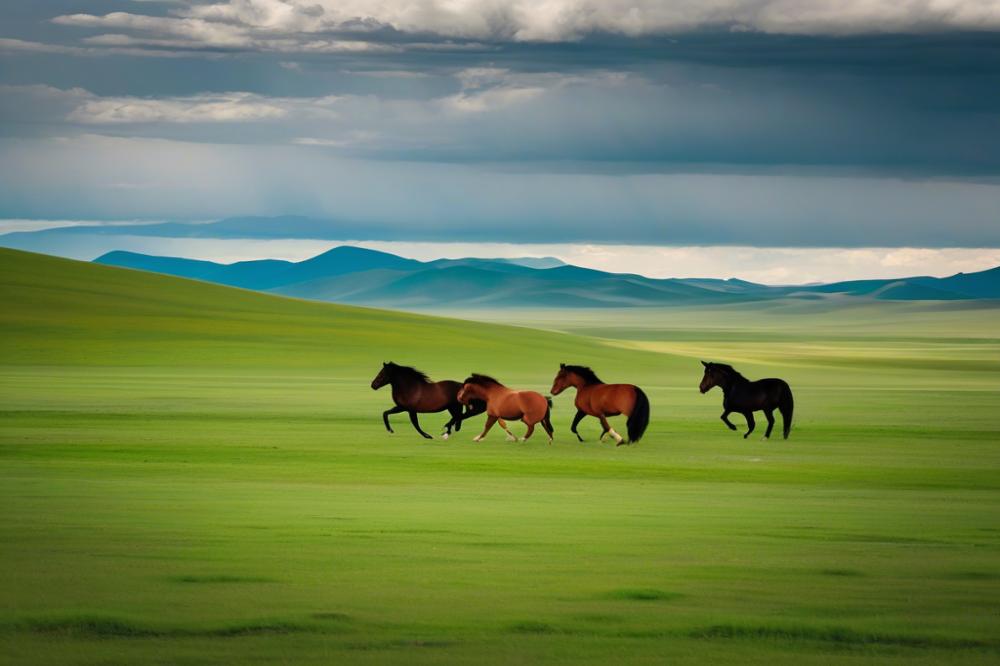Understanding the World of Horses-in-native-american-traditions”>Mongolian Nomadism
Mongolian nomadic culture has long captivated those who study human societies. This lifestyle focuses on moving with the seasons, relying on the land for survival. For nomads, the vast grasslands of Mongolia are more than just a home; they represent freedom and adventure. The significance of this way of life cannot be overstated. Through centuries of practice, it has molded social structures, traditions, and even identities.
Many cultures around the world hold Horses in high esteem. They symbolize strength, companionship, and agility. In Mongolia, these animals transcend mere utility. They are intertwined with daily life, serving as a primary mode of transport, a source of food, and a vital part of cultural rituals. The bond between humans and horses is profound, often reflecting respect and a deep understanding.
Connections between horses and pastoral lifestyles are especially evident in nomadic traditions. Herding requires constant movement, and horses facilitate this need seamlessly. People depend on their endurance and speed to manage livestock and navigate the expansive steppes. A horse is not just a tool; it represents status, skill, and heritage. For many pastoralists, the horse embodies both a partner and a lifeline in their daily endeavors.
These complex relationships underscore how a single species can influence cultural evolution. In Mongolia, horses have shaped the very fabric of nomadic existence. Understanding these connections helps illuminate broader themes of resilience, adaptation, and community. In the following sections, we will delve deeper into how horses transformed the lives and traditions of the Mongolian nomads.
History of Horses in Mongolian Culture
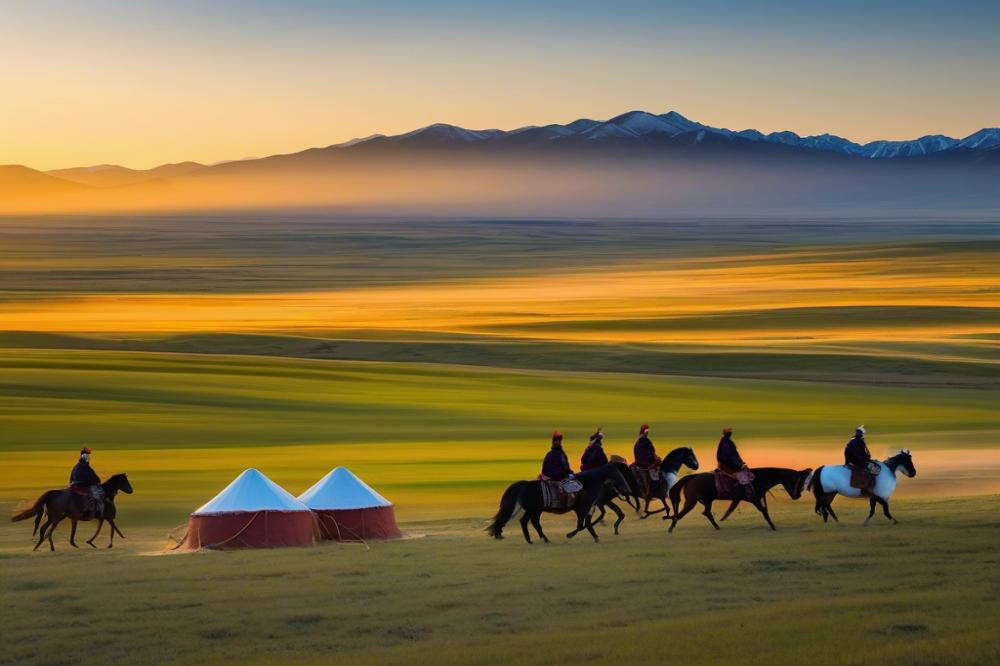
Origins of Horse Domestication in Central Asia
Horses have played a critical role in the history of Central Asia. Evidence suggests they were among the first animals to be domesticated around 3500 BCE. This occurred in the vast steppes, where diverse tribes roamed. The horse provided more than just a means of transportation. It became a source of food, clothing, and companionship. Many believe this close relationship marked the beginning of a deep cultural connection.
Role of Horses in Early Mongolian Societies
In the early days, horses were central to survival for nomadic tribes. They contributed to hunting and gathering activities. Furthermore, horses played a vital part in military tactics. Many successful Mongol leaders, like Genghis Khan, recognized their power. This understanding helped forge a vast empire. The horse was not merely a tool; it symbolized status and wealth. For families, possessing many horses meant greater security and influence. Daily life depended on these animals, whether it was for herding or transporting goods.
Evolution of Horse Breeds and Their Adaptation to Nomadic Life
Over centuries, distinct horse breeds emerged through selective breeding. Mongolian horses, for instance, are smaller but incredibly resilient. They adapted well to harsh climates and rugged terrains. This capability allowed nomads to venture further into the wilderness. Each breed served specific needs, honing skills in endurance and stamina. Their strength supported long migrations and quick travel across vast distances. Horses truly became an extension of the nomads’ way of life, integral to their identity.
The Role of Horses in the Mongol Empire
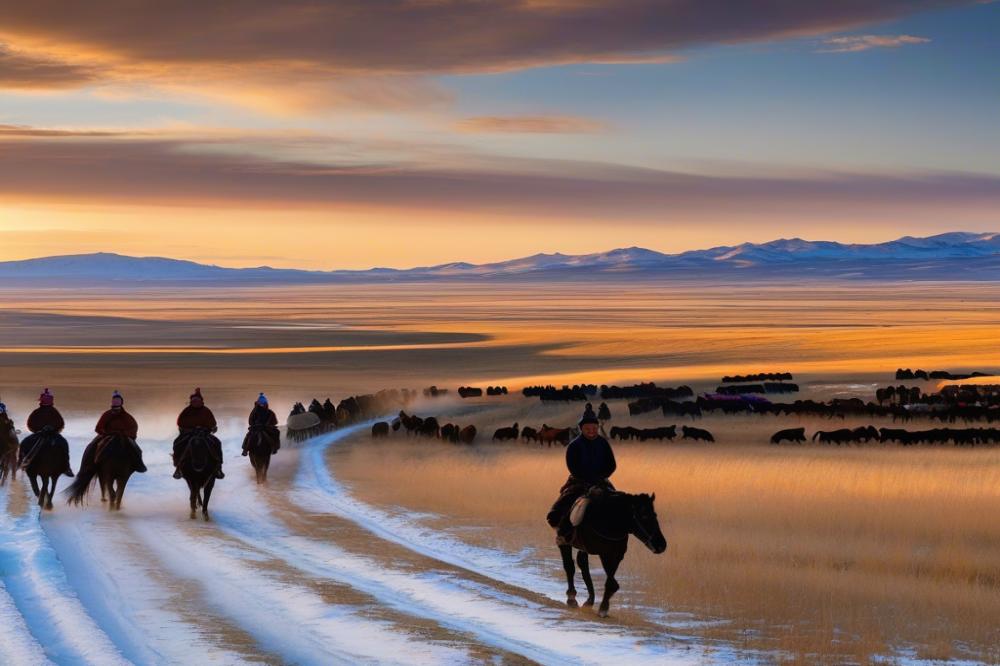
The military importance of horses for Chinggis Khan cannot be overstated. During his conquests, he utilized cavalry tactics that relied heavily on swift and agile steeds. These animals allowed Mongol warriors to move quickly across vast distances, striking fear into their enemies. Mobility was essential on the battlefield. The ability to ride and fight simultaneously gave the Mongols a significant edge over more traditional armies.
In Mongol society, horses symbolized status and power. The number of horses a person owned often marked their wealth and influence. Leaders and nobles were known for their fine steeds, which reflected their rank. Ownership of a strong horse could elevate a family’s standing within the tribe. These animals were not merely tools; they were woven into the very fabric of cultural identity.
Horse culture had a profound impact on the expansion of the Mongol Empire. Extensive breeding practices created strong and resilient horses suited for diverse terrains. As the empire expanded, so did their need for mounted warriors. The reliance on horses allowed the Mongols to cover great distances, facilitating rapid conquests. Enemies could rarely match their speed and efficiency.
The connection between horses and the nomadic lifestyle was intricate. Every aspect of everyday life revolved around these animals. Tribes moved with their herds, and horses played a crucial role in hunting, trade, and communication. This reliance fostered a deep respect for these creatures. They were seen as vital partners in survival and conquest.
Chinggis Khan recognized early on the potential of horse-based warfare. His military strategies incorporated this knowledge, leading to early successes that laid the groundwork for a vast empire. Horses became essential for sustaining the momentum of Mongol advances. The logistics of moving troops also depended on the speed and endurance of these animals.
Horses and Nomadic Lifestyle
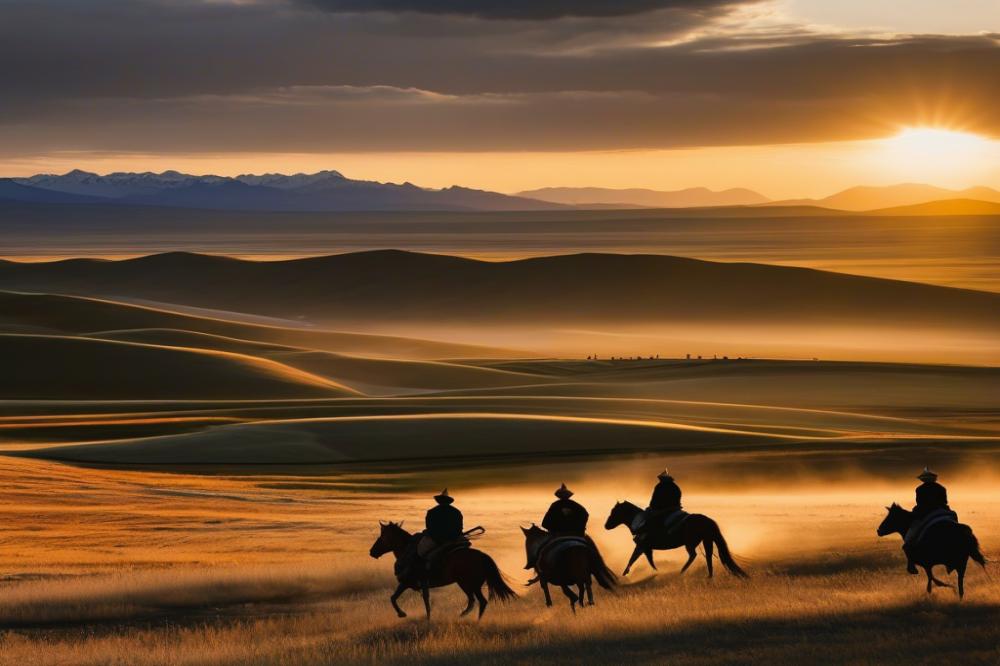
Horses served as the backbone of the nomadic lifestyle. They enabled people to traverse vast plains and harsh terrains with ease. This reliance on horses was not just about transportation but about survival. In a region where distance could be daunting, horses provided accessibility to resources like water and grazing lands.
Herding practices tightly intertwined with the use of horses. Nomads often moved their livestock in search of better pastures. These animals helped in managing herds, guiding them to fresh grass and away from danger. Riders learned to communicate with their horses, creating a partnership crucial for success.
Equestrian practices display a rich tradition among nomadic peoples. Skills such as bareback riding are common, showcasing a deep bond with their animals. Children often start riding at a young age, fostering confidence and competence. This familiarity is essential for understanding the needs of both horse and herd.
Riding techniques reflect the environment. Fast gallops across the steppes are necessary for herding. Occasionally, slower paces allow for observation and planning. Unique traditions also arise during festivals, where horsemanship is showcased as a measure of skill and pride.
The bond between horses and their owners is profound. Horses are not merely tools; they are companions and family. Many households treat their horses with care, providing food and comfort. This relationship enhances the stability of their mobile lifestyle.
Animal Husbandry and Horse Care
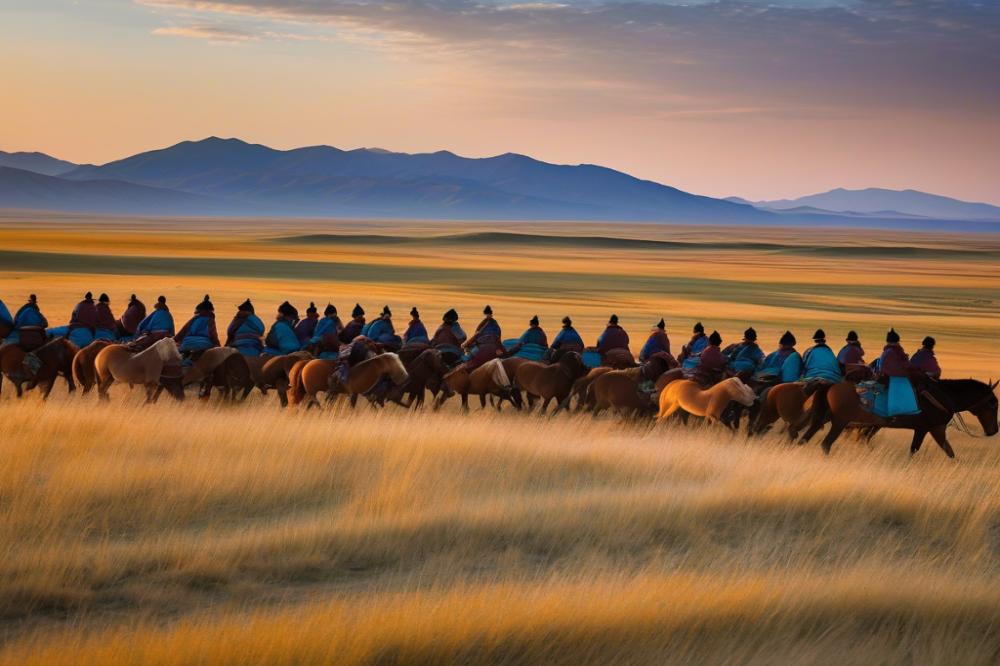
Traditional methods of horse care among Mongolian nomads
Mongolian nomads have long relied on their horses for survival. Daily routines involve careful attention to the animals. Horses are fed a diet of grass and hay, tailored to the seasons. During harsh winters, finding forage becomes a challenge. Skilled caretakers know how to keep their animals strong and healthy.
Grooming is not just practical; it is also a bonding experience. Brush strokes work out dirt and tangles, making the animals feel cared for. Routine veterinary care may involve simple herbal remedies passed down through generations. Horses receive vaccinations when available, but traditional knowledge persists.
Watering the horses is crucial. Nomads often travel to the nearest rivers or streams to quench their thirst. In dry periods, they create makeshift containers to collect rainwater. Observing their horses’ condition helps nomads spot potential health issues early. A keen eye can make all the difference.
The importance of horse breeding in sustaining nomadic life
Breeding horses is central to the nomadic way of life. Strong, healthy animals can carry loads across vast landscapes. This ability enables traders to exchange goods with distant tribes and settlements. Quality breeding practices also lead to offspring that are agile and resilient.
Each breed embodies traits important for survival. Some are known for speed, while others excel in endurance. Choosing which horses to breed is crucial for survival in challenging environments. Over decades, nomads have honed their breeding skills, ensuring their favorites carry the right genes.
Breeding also strengthens communal ties. Families share knowledge and resources to improve their horse stock. This collaboration fosters a sense of unity among families, reinforcing their survival. Those with more horses often assist others in exchange for different goods.
cultural significance of horses in Mongolian rituals and traditions
Horses are not merely animals; they hold deep cultural significance. They appear in numerous rituals and celebrations throughout the year. Festivals often feature traditional horse racing, showcasing speed and skill. Winning races enhances a family’s prestige within the community.
Festivals like Naadam celebrate the bond between horses and people. During this time, stories of legendary steeds often circulate. Songs and dances highlight the horse’s importance in Mongolian history. Each tale reflects the deep respect nomads hold for their equine companions.
In times of mourning, horses are given special care. Rituals may involve the preparation of a horse’s mane and tail. These activities honor what the horses have done for the family. During major life events, such as weddings, horses become central symbols of fertility and prosperity.
The bond between horses and the nomadic lifestyle is undeniable. These animals not only serve practical needs but also enrich the cultural fabric. Their role in Mongolian life continues to thrive, embodying both utility and spirit.
Modern Perspectives on Horse Culture in Mongolia
Changes in horse culture with modernization and urbanization
Horse culture in Mongolia is shifting. Rapid urbanization has led to fewer people living in the countryside. Many young Mongolians move to cities for work and education. As a result, traditional horse riding practices are becoming less common in everyday life. The number of horses owned by families has decreased. Urban life prioritizes different activities and interests, which often do not include riding horses. However, this change does not erase the significance of horses in the culture entirely.
Continuing traditions of horse riding and herding
Despite modern influences, many traditions persist. In rural areas, herding remains a vital part of daily activities. Nomadic families still rely on their horses for travel and herding livestock. During special festivals, horse riding takes center stage. Events like the Naadam Festival showcase the skills of riders and the strength of their horses. These gatherings bring communities together. They celebrate a rich heritage that many families are proud to pass on. Traditional horseback games and races continue to capture the imagination of participants and spectators alike.
Tourism and the revival of interest in Mongolian horse culture
Tourism has sparked new interest in equestrian traditions. Travelers from across the globe come to experience Mongolian culture. Many seek opportunities to ride horses through the beautiful landscapes. Tour operators now offer horseback adventures that focus on local customs. This has encouraged a revival of interest in equine culture. Young people in cities are beginning to reconnect with their heritage. Learning to ride and care for horses is gaining popularity again. These activities provide a sense of identity and pride. Both locals and tourists can appreciate the deep connection between Mongolian society and its horses.
Final Thoughts on the Role of Horses in Mongolian Life
Impact on Nomadic Existence
Horses have played a crucial role in shaping the lifestyle of nomads in Mongolia. They have enabled mobility and flexibility, allowing herders to navigate vast landscapes effortlessly. This reliance on horses has fundamentally influenced daily life, from transportation to communication. Families often travel great distances in search of pastures for their livestock. In this way, horses are not just companions; they are vital to survival.
Enduring Legacy
The impact of horses extends beyond practical needs. Over generations, they have become symbols of pride and identity among Mongolian people. Festivals celebrated across the country highlight equestrian skills and showcase a rich cultural heritage. Even today, horseback riding remains a popular pastime, reflecting its deep roots in history. The way horses intertwine with traditions illustrates a bond that remains strong in the face of modernity.
Looking Ahead
Yet, challenges loom on the horizon. As urbanization increases, the traditional practices of herding may face significant changes. Young people are moving to cities, often leaving behind pastoralism. Despite this, the horse culture in Mongolia adapts, reminding us of its resilience. Future generations may find innovative ways to incorporate these animals into contemporary life. Keeping this connection alive is vital for maintaining the unique identity of the Mongolian people. The legacy of horses continues to shape their culture, reminding us of a time when the vast Mongol Empire thrived on the strength and spirit of these magnificent creatures.

